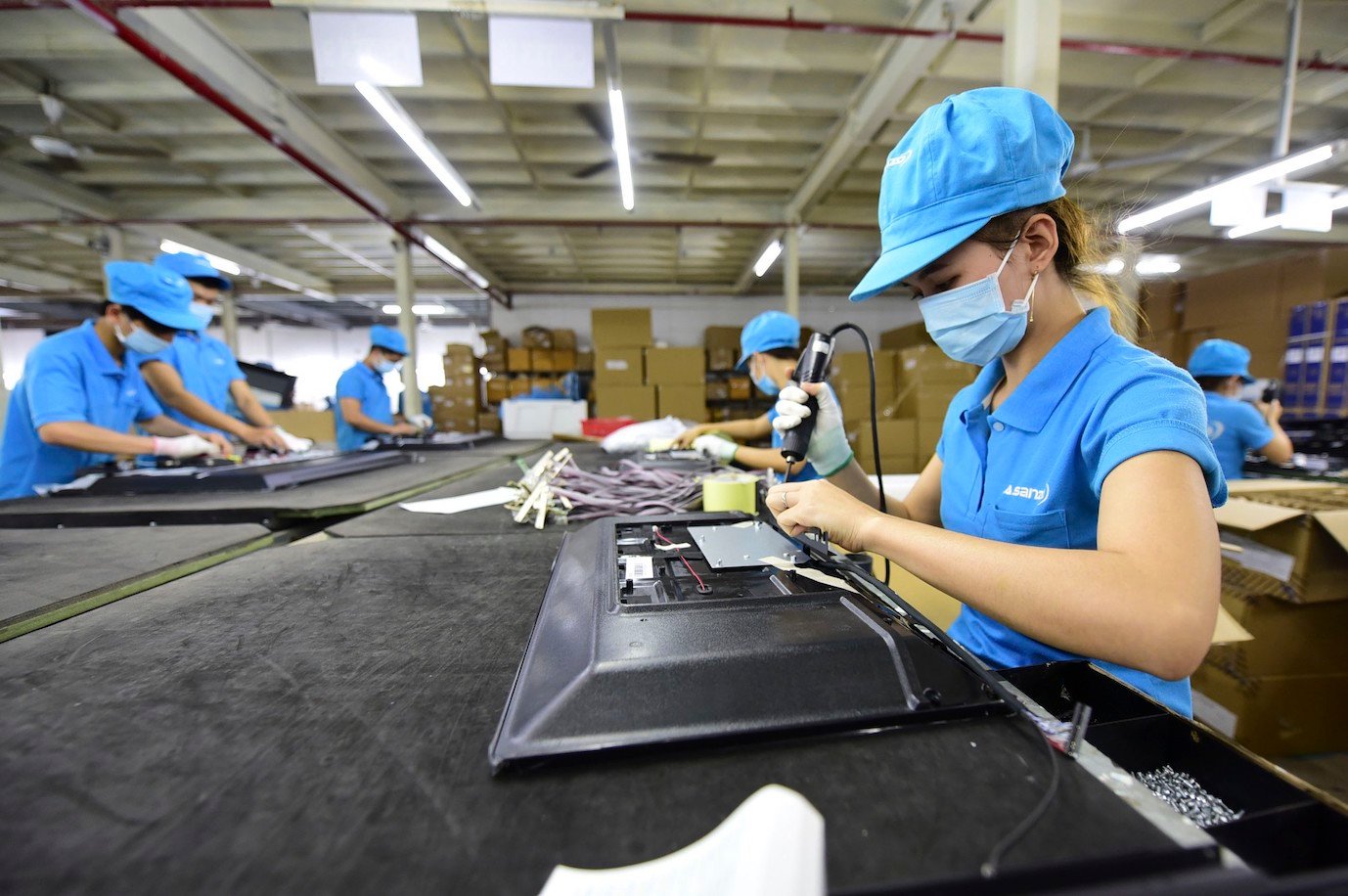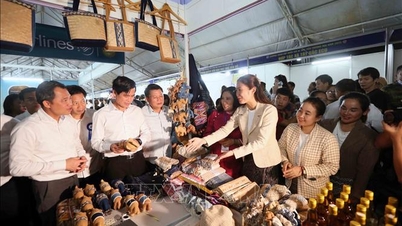The Ministry of Industry and Trade believes that it is necessary to issue legal documents stipulating a set of criteria so that businesses can accurately identify goods produced in Vietnam, avoiding unnecessary disputes and losses.
 |
| The Ministry of Industry and Trade is submitting to the Government a draft proposal to develop a Decree on how to identify goods produced in Vietnam. |
The Ministry of Industry and Trade is submitting to the Government a draft proposal to develop a Decree on how to identify goods produced in Vietnam.
"Vietnam has issued many regulations on the origin of goods. However, these regulations only apply to exported and imported goods, helping goods enjoy import tax incentives according to commitments in free trade agreements or serve other foreign trade management goals ," the Ministry said.
For domestically produced goods (including goods produced from imported materials and then circulated domestically), there are no regulations on how they can be shown as "products of Vietnam" or "made in Vietnam".
This makes many organizations and individuals confused when they want to accurately record the country of origin or source on product labels and goods circulating domestically.
On the other hand, some products, even though they only go through simple processing, assembly, and manufacturing stages in Vietnam, are still labeled "made in Vietnam", making consumers wonder and even angry, but the authorities have no basis to judge.
A typical case occurred at the end of 2017, when market management forces discovered that Khai Silk chain stores were counterfeiting the origin of goods, specifically Chinese silk scarves with the label "Made in Vietnam".
Or like Asanzo Group Joint Stock Company imports electronic components from China to Vietnam for assembly, then brings them to the Vietnamese market with labels stating "Made in Vietnam".
In addition, the situation of foreign goods that only go through simple processing and packaging in Vietnam but are also labeled "Made in Vietnam" and then exported to third countries poses a potential risk of origin fraud.
The Ministry of Industry and Trade said that although the “Made in Vietnam” label does not have the value of replacing a certificate of origin, such labeling can cause confusion or misidentification of Vietnamese goods, leading to the importing country applying restrictive measures on Vietnamese goods.
Therefore, the Ministry believes that it is urgent to issue legal documents stipulating a set of criteria so that businesses can accurately identify goods produced in Vietnam, avoiding disputes and even unnecessary losses.
“ The lack of regulations on how to determine what is “Vietnamese Goods” or “Made in Vietnam” for domestically circulated goods can lead to conflicts between production and consumption when the authorities have no basis for adjudication.
The issuance of the document "Made in Vietnam" helps solve this problem, making the business environment more transparent, better managed and consumer rights more guaranteed," the draft submission stated.
The Decree aims to stipulate that goods are considered goods produced in Vietnam when they meet one of the following criteria: goods of pure Vietnamese origin, goods produced in Vietnam from all raw materials of Vietnamese origin; goods that undergo the final processing and manufacturing stage in Vietnam that fundamentally changes the nature of the goods....
The Decree stipulates that simple processing and manufacturing stages will not be considered goods produced in Vietnam.
At the same time, it stipulates specific criteria in cases where goods undergo the final basic processing and manufacturing stages in Vietnam, such as converting commodity codes, value percentages or specific processing stages. At the same time, it stipulates the responsibilities of relevant entities in determining goods produced in Vietnam.
The Ministry of Industry and Trade has set out a roadmap to submit to the Prime Minister for approval of the Proposal to develop a Decree in November 2024.
The process of drafting, collecting opinions, completing, and submitting to the Government for promulgation is expected to take place from December 2024 to October 2025.
Source: https://baodautu.vn/se-co-quy-dinh-ve-hang-hoa-san-xuat-tai-viet-nam-d222636.html



![[Photo] President Luong Cuong attends the 80th Anniversary of the Traditional Day of Vietnamese Lawyers](https://vphoto.vietnam.vn/thumb/1200x675/vietnam/resource/IMAGE/2025/10/09/1760026998213_ndo_br_1-jpg.webp)
![[Photo] General Secretary To Lam visits Kieng Sang Kindergarten and the classroom named after Uncle Ho](https://vphoto.vietnam.vn/thumb/1200x675/vietnam/resource/IMAGE/2025/10/09/1760023999336_vna-potal-tong-bi-thu-to-lam-tham-truong-mau-giao-kieng-sang-va-lop-hoc-mang-ten-bac-ho-8328675-277-jpg.webp)

![[Photo] Prime Minister Pham Minh Chinh chairs a meeting of the Government Standing Committee on overcoming the consequences of natural disasters after storm No. 11](https://vphoto.vietnam.vn/thumb/1200x675/vietnam/resource/IMAGE/2025/10/09/1759997894015_dsc-0591-jpg.webp)



























































































Comment (0)